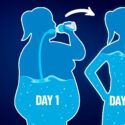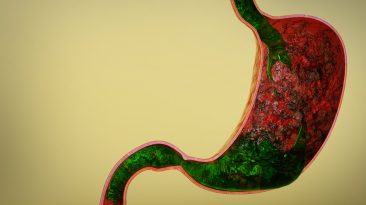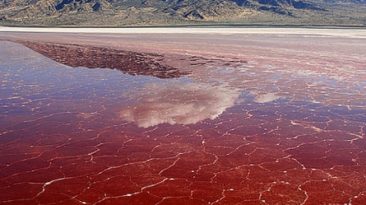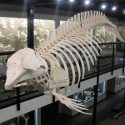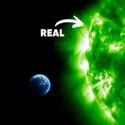Ever wonder what it would feel like to step into an oven? Welcome to Death Valley, California. Temperatures here can climb to a scorching 54.4 ºC (130 ºF), which is as cozy as the internal temperature of a steak. In Death Valley, it’s so hot you could fry an egg without a stove. But how soon would you get fried yourself?
What would your days in the hottest place on the planet be like? What could you do to survive this intense heat? And what could happen to your body if you weren’t careful?
It’s so hot you can barely breathe. This national park that stretches across California and Nevada might as well be hell on Earth. Located 86 m (282 ft) below sea level it’s the lowest point in North America, and the surrounding mountains trap the superheated air like an oven. For five months of the year, temperatures hover around 48 ºC (118 ºF).
You’d think that life there is unsustainable. But it turns out that Death Valley isn’t always dead. It comes to life in the spring as colorful wildflowers bloom and the temporary lakes fill the lowlands. And besides the tourists visiting the park, around 500 people live there all the time. So pack your bags. You’re moving to the scorching hot desert to join them.
Life in Death Valley would be very different from anything you may be used to. Not just because of the heat, but because it’s quite a commute to, well, anywhere. The nearest high school and shopping center is an hour away. It’s a two-hour drive to the closest major city. And there are no doctors, dentists or restaurants around.
Despite this, or because of this, there’s a tight community in Death Valley. In the Cow Creek complex, residents of its 80 units share a gym, a playground and a library. Since they don’t get many visitors during the hottest times of the year, they end up spending a lot of time together. Though there isn’t much of an entertainment scene in Death Valley, there’s a lot to see outdoors.
After all, we’re talking about a national park. You could listen to the tiny pops and pings of billions of salt crystals bursting apart in the heat. Maybe enjoy the view of colored hills, thanks to the oxidation of natural metal deposits in the mountains. You could swim in a water-filled cavern. If you’re lucky, you could even catch a Devil’s Hole pupfish, a rare fish that can withstand the hot water.
Life in Death Valley doesn’t sound so bad. Except for (pause) [show footage of sun&heat] that. It would take some adjusting to the heat. When our body temperature reaches 41.7 °C (107° F), it can become life-threatening. This is known as hyperthermia, and it can lead to deterioration of internal organs and eventually death. In the climate extremes of your new home you could easily heat up to the point of hyperthermia.
Your best bet would be to take it slow. First, don’t forget the sunglasses, as the salt-covered basin can be blinding under the sunlight. Make sure you always have sunscreen and protective clothing. And avoid staying outside in the warmer hours, usually from 4 p.m. to 5:30 p.m. If you didn’t want to die of hyperthermia, you should prepare before you even set foot in the desert.
Your ability to survive in a hot climate is largely determined by your body shape and size. That’s because heat is a byproduct of cell metabolism, so larger animals with larger bodies and more cells typically produce more heat. Dropping a few kilos or pounds might be a good idea to adjust faster. Most people adapt to the heat after a few weeks. But it could take you a full year to get fully adjusted.
At this point, you’d have a lower core temperature and your blood vessels would increase blood flow to your skin. You’d also start sweating more. Not that this should be a problem. The heat in Death Valley is so intense your sweat would evaporate almost immediately. Once you start wearing a sweater at 27 ºC (80 ºF) you’d know you’re officially acclimated. At least to the warm season.
During the winter months, the maximum temperature is around 15 ºC (60 ºF) during the day and as low as -1 ºC (30 ºF) during the night. Which makes me wonder what it would be like to live in the coldest place on Earth?
Sources
- “12 Things You Didn’T Know About Death Valley”. 2018. doi.gov.
- “Death Valley Salt Pan : Climbing, Hiking & Mountaineering”. 2022. summitpost.org.
- “Death Valley: What Life Is Like In The ‘Hottest Place On Earth'”. Sophie Williams. 2020. bbc.com.
- “Death Valley Just Recorded The Hottest Temperature On Earth (Published 2020)”. Concepción de León and John Schwartz. 2020. nytimes.com.
- “Do People Live In Death Valley?”. Van Life Wanderer. 2020. vanlifewanderer.com.




